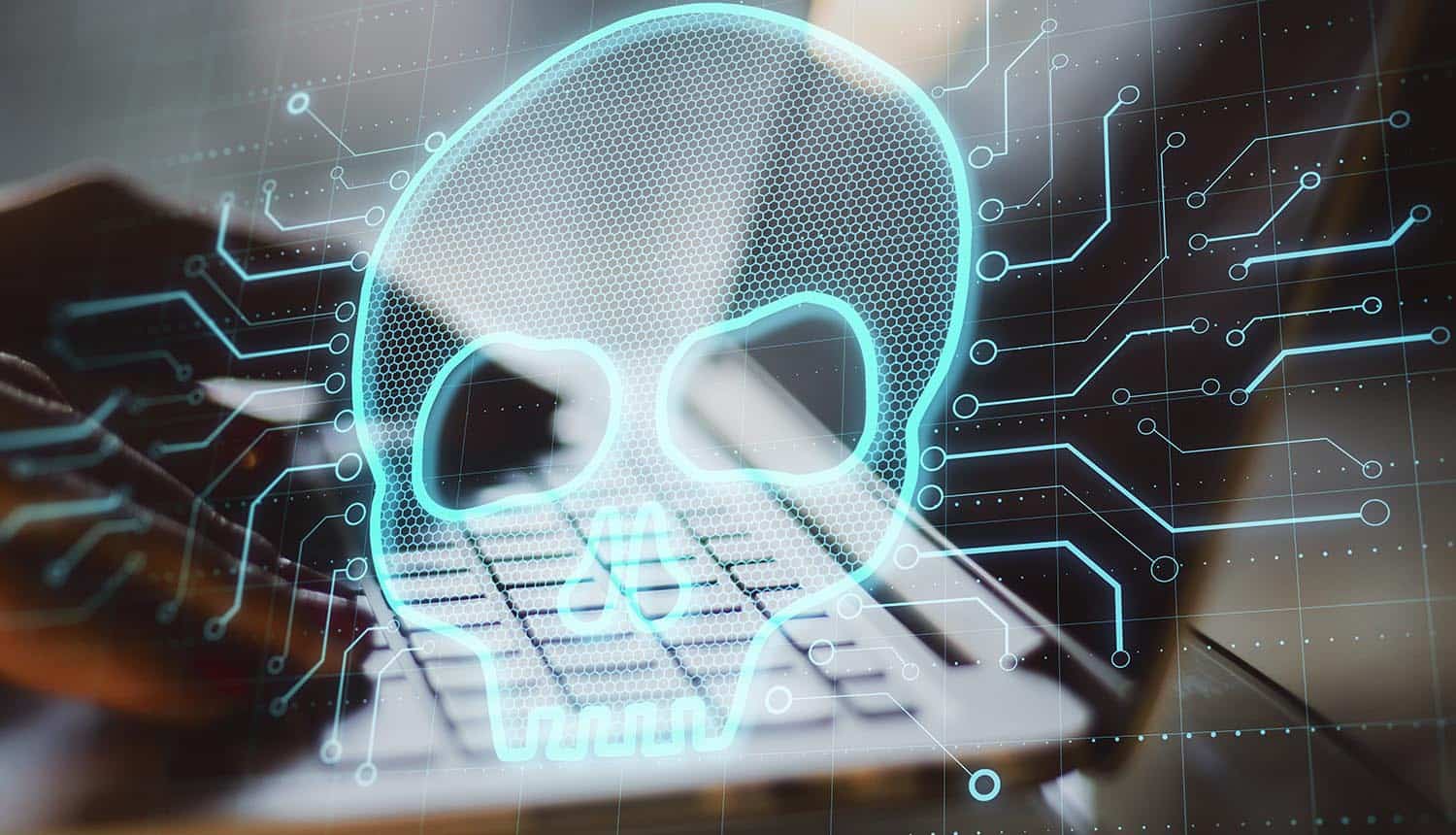Quote for the day:
"What you do has far greater impact than what you say." -- Stephen Covey
“Man in the Prompt”: New Class of Prompt Injection Attacks Pairs With Malicious Browser Extensions to Issue Secret Commands to LLMs
 The so-called “Man in the Prompt” attack presents two priority risks. One is to
internal LLMs that store sensitive company data and personal information, in the
belief that it is appropriately fenced off from other software and apps. The
other risk comes from particular LLMs that are broadly integrated into
workspaces, such as Google Gemini’s interaction with Google Workspace tools such
as Mail and Docs. This category of prompt injection attacks applies not just to
any type of browser extension, but any model or deployment of LLM. And the
malicious extension requires no special permissions to work, given that the DOM
access already provides everything it needs. ... The other proof-of-concept
targets Google Gemini, and by extension any elements of Google Workspace it has
been integrated with. Gemini is meant to automate routine and tedious tasks in
Workspace such as email responses, document editing and updating contacts. The
trouble is that it has almost complete access to the contents of these accounts
as well as anything the user has access permission for or has had shared with
them by someone else. Prompt injection attacks conducted by these extensions can
not only steal the contents of emails and documents with ease, but complex
queries can be fed to the LLM to target particular types of data and file
extensions; the autocomplete function can also be abused to enumerate available
files.
The so-called “Man in the Prompt” attack presents two priority risks. One is to
internal LLMs that store sensitive company data and personal information, in the
belief that it is appropriately fenced off from other software and apps. The
other risk comes from particular LLMs that are broadly integrated into
workspaces, such as Google Gemini’s interaction with Google Workspace tools such
as Mail and Docs. This category of prompt injection attacks applies not just to
any type of browser extension, but any model or deployment of LLM. And the
malicious extension requires no special permissions to work, given that the DOM
access already provides everything it needs. ... The other proof-of-concept
targets Google Gemini, and by extension any elements of Google Workspace it has
been integrated with. Gemini is meant to automate routine and tedious tasks in
Workspace such as email responses, document editing and updating contacts. The
trouble is that it has almost complete access to the contents of these accounts
as well as anything the user has access permission for or has had shared with
them by someone else. Prompt injection attacks conducted by these extensions can
not only steal the contents of emails and documents with ease, but complex
queries can be fed to the LLM to target particular types of data and file
extensions; the autocomplete function can also be abused to enumerate available
files.EU seeks more age verification transparency amid contentious debate
 The EU is considering setting minimum requirements for online platforms to
disclose their use of age verification or age estimation tools in their terms
and conditions. The obligation is contained in a new compromise draft text of
the EU’s proposed law on detecting and removing online child sex abuse material
(CSAM), dated July 24 and seen by MLex. A discussion of the proposal, which
contains few other changes to a previous draft, is scheduled for September 12.
The text also calls for online platforms to perform mandatory scans for CSAM,
which critics say could result in false positives and break end-to-end
cryptography. ... The way age verification is set to work under the OSA is
described as a “privacy nightmare” by PC Gamer, but the article stands in stark
contrast to the vague posturing of the political class. Author Jacob Ridley
acknowledges the possibility for double-blind methods of age assurance among
those that do not require any personal information at all to be shared with the
website or app the individual is trying to access. At the same time, many age
verification systems do not work this way. Also, age assurance pop-ups can be
spoofed, and those spoofs could harvest a wealth of valuable personal
information Privado ID Co-founder Evan McMullen calls it “like using a
sledgehammer to crack a walnut.” McMullen, of course, prefers a decentralized
approach that leans on zero-knowledge proofs (ZKPs).
The EU is considering setting minimum requirements for online platforms to
disclose their use of age verification or age estimation tools in their terms
and conditions. The obligation is contained in a new compromise draft text of
the EU’s proposed law on detecting and removing online child sex abuse material
(CSAM), dated July 24 and seen by MLex. A discussion of the proposal, which
contains few other changes to a previous draft, is scheduled for September 12.
The text also calls for online platforms to perform mandatory scans for CSAM,
which critics say could result in false positives and break end-to-end
cryptography. ... The way age verification is set to work under the OSA is
described as a “privacy nightmare” by PC Gamer, but the article stands in stark
contrast to the vague posturing of the political class. Author Jacob Ridley
acknowledges the possibility for double-blind methods of age assurance among
those that do not require any personal information at all to be shared with the
website or app the individual is trying to access. At the same time, many age
verification systems do not work this way. Also, age assurance pop-ups can be
spoofed, and those spoofs could harvest a wealth of valuable personal
information Privado ID Co-founder Evan McMullen calls it “like using a
sledgehammer to crack a walnut.” McMullen, of course, prefers a decentralized
approach that leans on zero-knowledge proofs (ZKPs).AI Is Changing the Cybersecurity Game in Ways Both Big and Small
 “People are rushing now to get [MCP] functionality while overlooking the
security aspect,” he said. “But once the functionality is established and the
whole concept of MCP becomes the norm, I would assume that security researchers
will go in and essentially update and fix those security issues over time. But
it will take a couple of years, and while that is taking time, I would advise
you to run MCP somehow securely so that you know what’s going on.” Beyond the
tactical security issues around MCP, there are bigger issues that are more
strategic, more systemic in nature. They involve the big changes that large
language models (LLMs) are having on the cybersecurity business and the things
that organizations will have to do to protect themselves from AI-powered attacks
in the future ... The sheer volume of threat data, some of which may be AI
generated, demands more AI to be able to parse it and understand it, Sharma
said. “It’s not humanly possible to do it by a SOC engineer or a vulnerability
engineer or a threat engineer,” he said. Tuskira essentially functions as an
AI-powered security analyst to detect traditional threats on IT systems as well
as threats posed to AI-powered systems. Instead of using commercial AI models,
Sharma adopted open-source foundation models running in private data centers.
Developing AI tools to counter AI-powered security threats demands custom
models, a lot of fine-tuning, and a data fabric that can maintain context of
particular threats, he said.
“People are rushing now to get [MCP] functionality while overlooking the
security aspect,” he said. “But once the functionality is established and the
whole concept of MCP becomes the norm, I would assume that security researchers
will go in and essentially update and fix those security issues over time. But
it will take a couple of years, and while that is taking time, I would advise
you to run MCP somehow securely so that you know what’s going on.” Beyond the
tactical security issues around MCP, there are bigger issues that are more
strategic, more systemic in nature. They involve the big changes that large
language models (LLMs) are having on the cybersecurity business and the things
that organizations will have to do to protect themselves from AI-powered attacks
in the future ... The sheer volume of threat data, some of which may be AI
generated, demands more AI to be able to parse it and understand it, Sharma
said. “It’s not humanly possible to do it by a SOC engineer or a vulnerability
engineer or a threat engineer,” he said. Tuskira essentially functions as an
AI-powered security analyst to detect traditional threats on IT systems as well
as threats posed to AI-powered systems. Instead of using commercial AI models,
Sharma adopted open-source foundation models running in private data centers.
Developing AI tools to counter AI-powered security threats demands custom
models, a lot of fine-tuning, and a data fabric that can maintain context of
particular threats, he said.AI burnout: A new challenge for CIOs
 To take advantage of the benefits of smart tools and avoid overburdening the
workforce, the board of directors must carefully manage their deployment. “As
leaders, we must set clear limits, encourage training without overwhelming
others, and open spaces for conversation about how people are experiencing this
transition,” Blázquez says. “Technology must be an ally, not a threat, and the
role of leadership will be key in that balance.” “It is recommended that
companies take the first step. They must act from a preventative, humane, and
structural perspective,” says De la Hoz. “In addition to all the human, ethical,
and responsible components, it is in the company’s economic interest to maintain
a happy, safe, and mission-focused workforce.” Regarding increasing personal
productivity, he emphasizes the importance of “valuing their efforts, whether
through higher salary returns or other forms of compensation.” ... From here,
action must be taken, “implementing contingency plans to alleviate these areas.”
One way: working groups, where the problems and barriers associated with
technology can be analyzed. “From here, use these KPIs to change my strategy. Or
to set it up, because often what happens is that I deploy the technology and
forget how to get that technology adopted.”
To take advantage of the benefits of smart tools and avoid overburdening the
workforce, the board of directors must carefully manage their deployment. “As
leaders, we must set clear limits, encourage training without overwhelming
others, and open spaces for conversation about how people are experiencing this
transition,” Blázquez says. “Technology must be an ally, not a threat, and the
role of leadership will be key in that balance.” “It is recommended that
companies take the first step. They must act from a preventative, humane, and
structural perspective,” says De la Hoz. “In addition to all the human, ethical,
and responsible components, it is in the company’s economic interest to maintain
a happy, safe, and mission-focused workforce.” Regarding increasing personal
productivity, he emphasizes the importance of “valuing their efforts, whether
through higher salary returns or other forms of compensation.” ... From here,
action must be taken, “implementing contingency plans to alleviate these areas.”
One way: working groups, where the problems and barriers associated with
technology can be analyzed. “From here, use these KPIs to change my strategy. Or
to set it up, because often what happens is that I deploy the technology and
forget how to get that technology adopted.” CIOs need a military mindset
 While the battlefield feels very far away from the boardroom, this principle is
something that CIOs can take on board when they’re tasked with steering a
complex digital programme. Step back and clear the path so that you can trust
your people to deliver; that’s when the real progress gets made. Contrary to
popular belief, the military is not rigidly hierarchical. In fact, it teaches
individuals to operate with autonomy within defined parameters. Officers set the
boundaries of a mission and step back, allowing you to take full ownership of
your actions. This approach is supported by the OODA Loop, a framework that
cultivates awareness and decisive action under pressure. ... Resilience is
perhaps the hardest leadership trait to teach and the most vital to embody.
Military officers are taught to plan exhaustively, train rigorously, and prepare
for all scenarios, but they’re also taught that ‘the first casualty of war is
the plan.’ Adaptability under pressure is a non-negotiable mindset for you to
adopt and instil in your team. When your team feels supported to grow, they stop
fearing change and start responding to it; it is here that adaptability and
resilience become second nature. There is also a practical opportunity to bring
these principles in-house, as veterans transitioning out of the army may bring
with them a refreshed leadership approach. Because they’re often confident under
pressure and focused on outcomes, their transferrable skills allow them to
thrive in the corporate world.
While the battlefield feels very far away from the boardroom, this principle is
something that CIOs can take on board when they’re tasked with steering a
complex digital programme. Step back and clear the path so that you can trust
your people to deliver; that’s when the real progress gets made. Contrary to
popular belief, the military is not rigidly hierarchical. In fact, it teaches
individuals to operate with autonomy within defined parameters. Officers set the
boundaries of a mission and step back, allowing you to take full ownership of
your actions. This approach is supported by the OODA Loop, a framework that
cultivates awareness and decisive action under pressure. ... Resilience is
perhaps the hardest leadership trait to teach and the most vital to embody.
Military officers are taught to plan exhaustively, train rigorously, and prepare
for all scenarios, but they’re also taught that ‘the first casualty of war is
the plan.’ Adaptability under pressure is a non-negotiable mindset for you to
adopt and instil in your team. When your team feels supported to grow, they stop
fearing change and start responding to it; it is here that adaptability and
resilience become second nature. There is also a practical opportunity to bring
these principles in-house, as veterans transitioning out of the army may bring
with them a refreshed leadership approach. Because they’re often confident under
pressure and focused on outcomes, their transferrable skills allow them to
thrive in the corporate world.
Backend FinOps: Engineering Cost-Efficient Microservices in the Cloud
/articles/backend-finops-cost-efficiency/en/smallimage/thumbnail-backend-finops-cost-efficiency-1754301935666.jpg) Integrating cost management directly into Infrastructure-as-Code (IaC)
frameworks such as Terraform enforces fiscal responsibility at the resource
provisioning phase. By explicitly defining resource constraints and mandatory
tagging, teams can preemptively mitigate orphaned cloud expenditures. ...
Integrating cost awareness directly within Continuous Integration and Delivery
(CI/CD) pipelines ensures proactive management of cloud expenditures throughout
the development lifecycle. Tools such as Infracost automate the calculation of
incremental cloud costs introduced by individual code changes. ... Cost-based
pre-merge testing frameworks reinforce fiscal prudence by simulating peak-load
scenarios prior to code integration. Automated tests measured critical metrics,
including ninety-fifth percentile response times and estimated cost per ten
thousand requests, to ensure compliance with established financial performance
benchmarks. Pull requests failing predefined cost-efficiency criteria were
systematically blocked. ... Comprehensive cost observability tools such as
Datadog Cost Dashboards combine billing metrics with Application Performance
Monitoring (APM) data, directly supporting operational and cost-related SLO
compliance.
Integrating cost management directly into Infrastructure-as-Code (IaC)
frameworks such as Terraform enforces fiscal responsibility at the resource
provisioning phase. By explicitly defining resource constraints and mandatory
tagging, teams can preemptively mitigate orphaned cloud expenditures. ...
Integrating cost awareness directly within Continuous Integration and Delivery
(CI/CD) pipelines ensures proactive management of cloud expenditures throughout
the development lifecycle. Tools such as Infracost automate the calculation of
incremental cloud costs introduced by individual code changes. ... Cost-based
pre-merge testing frameworks reinforce fiscal prudence by simulating peak-load
scenarios prior to code integration. Automated tests measured critical metrics,
including ninety-fifth percentile response times and estimated cost per ten
thousand requests, to ensure compliance with established financial performance
benchmarks. Pull requests failing predefined cost-efficiency criteria were
systematically blocked. ... Comprehensive cost observability tools such as
Datadog Cost Dashboards combine billing metrics with Application Performance
Monitoring (APM) data, directly supporting operational and cost-related SLO
compliance.
5 hard truths of a career in cybersecurity — and how to navigate them
 Leadership and HR teams often gatekeep by focusing exclusively on candidates
with certain educational degrees or specific credentials, typically from vendors
such as Cisco, Juniper, or Palo Alto. Although Morrato finds this somewhat
understandable given the high cost of hiring in cybersecurity, he believes this
approach unfairly filters out capable individuals who, in a different era, would
have had more opportunities. ... Because most team managers elevate from
technical roles, they often lack the leadership and interpersonal skills needed
to foster healthy team cultures or manage stakeholder relationships effectively.
This cultural disconnect has a tangible impact on individuals. “People who work
in security functions don’t always feel safe — psychologically safe — doing so,”
Budge explains. ... Cybersecurity teams must also rethink how they approach
risk, as relying solely on strict, one-size-fits-all controls is no longer
tenable, Mistry says. Instead, he advocates for a more adaptive,
business-aligned framework that considers overall exposure rather than just
technical vulnerabilities. “Can I live with this risk? Can I not live with this
risk? Can I do something to reduce the risk? Can I offload the risk? And it’s a
risk conversation, not a ‘speeds and feeds’ conversation,” he says, emphasizing
that cybersecurity leaders must actively build relationships across the
organization to make these conversations possible.
Leadership and HR teams often gatekeep by focusing exclusively on candidates
with certain educational degrees or specific credentials, typically from vendors
such as Cisco, Juniper, or Palo Alto. Although Morrato finds this somewhat
understandable given the high cost of hiring in cybersecurity, he believes this
approach unfairly filters out capable individuals who, in a different era, would
have had more opportunities. ... Because most team managers elevate from
technical roles, they often lack the leadership and interpersonal skills needed
to foster healthy team cultures or manage stakeholder relationships effectively.
This cultural disconnect has a tangible impact on individuals. “People who work
in security functions don’t always feel safe — psychologically safe — doing so,”
Budge explains. ... Cybersecurity teams must also rethink how they approach
risk, as relying solely on strict, one-size-fits-all controls is no longer
tenable, Mistry says. Instead, he advocates for a more adaptive,
business-aligned framework that considers overall exposure rather than just
technical vulnerabilities. “Can I live with this risk? Can I not live with this
risk? Can I do something to reduce the risk? Can I offload the risk? And it’s a
risk conversation, not a ‘speeds and feeds’ conversation,” he says, emphasizing
that cybersecurity leaders must actively build relationships across the
organization to make these conversations possible.
How AI amplifies these other tech trends that matter most to business in 2025
Agentic AI is an artificial intelligence system capable of independently planning and executing complex, multistep tasks. Built on foundation models, these agents can autonomously perform actions, communicate with one another, and adapt to new information. Significant advancements have emerged, from general agent platforms to specialized agents designed for deep research. ... Application-specific semiconductors are purpose-built chips optimized to perform specialized tasks. Unlike general-purpose semiconductors, they are engineered to handle specific workloads (such as large-scale AI training and inference tasks) while optimizing performance characteristics, including offering superior speed, energy efficiency, and performance. ... Cloud and edge computing involve distributing workloads across locations, from hyperscale remote data centers to regional hubs and local nodes. This approach optimizes performance by addressing factors such as latency, data transfer costs, data sovereignty, and data security. ... Quantum-based technologies use the unique properties of quantum mechanics to execute certain complex calculations exponentially faster than classical computers; secure communication networks; and produce sensors with higher sensitivity levels than their classical counterparts.Differentiable Economics: Strategic Behavior, Mechanisms, and Machine Learning
 Differential economics is related to but different from the recent progress in
building agents that achieve super-human performance in combinatorial games such
as chess and Go. First, economic games such as auctions, oligopoly competition,
or contests typically have a continuous action space expressed in money, and
opponents are modeled as draws from a prior distribution that has continuous
support. Second, differentiable economics is focused on modeling and achieving
equilibrium behavior. The second opportunity in differentiable economics is to
use data-driven methods and machine learning to discover rules, constraints, and
affordances—mechanisms—for economic environments that promote good outcomes in
the equilibrium behavior of a system. Mechanism design solves the inverse
problem of game theory, finding rules of strategic interaction such that agents
in equilibrium will effect an outcome with desired properties. Where possible,
mechanisms promote strong equilibrium solution concepts such as dominant
strategy equilibria, making it strategically easy for agents to participate.
Think of a series of bilateral negotiations between buyers and a seller that is
replaced by an efficient auction mechanism with simple dominant strategies for
agents to report their preferences truthfully.
Differential economics is related to but different from the recent progress in
building agents that achieve super-human performance in combinatorial games such
as chess and Go. First, economic games such as auctions, oligopoly competition,
or contests typically have a continuous action space expressed in money, and
opponents are modeled as draws from a prior distribution that has continuous
support. Second, differentiable economics is focused on modeling and achieving
equilibrium behavior. The second opportunity in differentiable economics is to
use data-driven methods and machine learning to discover rules, constraints, and
affordances—mechanisms—for economic environments that promote good outcomes in
the equilibrium behavior of a system. Mechanism design solves the inverse
problem of game theory, finding rules of strategic interaction such that agents
in equilibrium will effect an outcome with desired properties. Where possible,
mechanisms promote strong equilibrium solution concepts such as dominant
strategy equilibria, making it strategically easy for agents to participate.
Think of a series of bilateral negotiations between buyers and a seller that is
replaced by an efficient auction mechanism with simple dominant strategies for
agents to report their preferences truthfully.
No comments:
Post a Comment